
Women and Depression

Mental health technicians assigned to the 48th Medical Group Mental Health Flight converse in the hospital reception area at Royal Air Force Lakenheath, England. The Mental Health Flight is one of many resources available to assist with depression and other mental health concerns. (U.S. Air Force photo/Airman 1st Class Shanice Williams-Jones)
Imagine having feelings of worthlessness or helplessness. Imagine being unable to sleep, feeling restless and irritable much of the time, or even hiding under the covers afraid to face the day. Many who suffer from depression may not be able to concentrate at work or perhaps even get to work. Those experiencing high- and low-functioning depression know such feelings all too well.
But for women, there are certain times in their lives when a depression diagnosis is more common. Research has shown that hormonal changes at three stages of life—puberty, post-pregnancy, and during perimenopause—may trigger clinical depression.
Dr. Nancy Skopp, research psychologist at the Psychological Health Center of Excellence, described clinical depression, or major depressive disorder, as a depressed mood lasting at least two weeks and marked by a loss of interest in things that once were pleasurable. She noted that this period would contain a clear change from previous functioning. If someone isn’t completing work duties, shows up late for work, or experiences profound fatigue and avoids interaction with family and friends, depression could be the cause.
“Depression symptoms in women often occur around a reproductive event,” said Skopp, adding that there is some evidence that suggests women may have a chronic and recurrent course with longer and more frequent episodes than men.
Skopp cited statistics from the National Institute of Mental Health showing that 50-80 percent of new mothers may experience the “baby blues,” which usually appear about a week after giving birth and include feeling down, irritability, sleep problems, anxiety, and eating too much or too little. The difference is that the symptoms are mild and usually resolve in a week or two.
Postpartum depression is much more serious, Skopp said. Between 10 and 20 percent of new mothers experience depression, according to NIMH statistics. Symptoms of extreme sadness, anxiety, and exhaustion may make it difficult to complete daily activities as a new mother.
During perimenopause, usually between the ages of 40 and 50, when the ovaries gradually begin to make less estrogen, depressive symptoms combine with menopausal symptoms. Women may also experience other life challenges, such as the demands of caring for aging parents, a change in marital status, health problems, or negative attitudes about aging. Skopp said although men may experience similar stresses at midlife, the hormonal changes experienced by women may compound such stresses. “It’s a very challenging time,” she said.
Approximately 12 million women in the United States experience clinical depression each year, with one in eight experiencing depression in her lifetime, according to NIMH research. This rate of depression corresponds to hormonal changes in women, particularly during these three life stages, suggesting that female hormonal fluctuations may be a trigger for depression. Another trigger may be gender differences between women and men, which may be genetic or involve life stressors and coping styles.
Skopp says research shows women may have a greater tendency to internalize in the face of depressive symptoms. Men appear to be more likely than women to cope with such symptoms through behavioral distraction, such as doing something that takes the mind off depressive feelings. The result appears to be that more active distraction in men may shorten or prevent a depressive episode whereas internalization in women may prolong it. The Centers for Disease Control and Prevention reports that between 2013 and 2016, 10.4 percent of women experienced depression compared to 5.5 percent of men.
“Being in the military can magnify the depression triggers one might experience in the general population,” said Navy Cmdr. Paulette Cazares, associate director for mental health at the Naval Medical Center San Diego.
“The benefit of seeing depression as any other illness allows service members to realize the necessity of early treatment, and the ability to stay focused on career and personal goals,” Cazares said. “Psychotherapy or antidepressant medications are first-line options to treat depression and reduce chances of a relapse. Meditation and yoga as therapy have also been used successfully to alleviate depressive symptoms.”
If you have symptoms of depression, talk to your health care provider. A loved one showing symptoms should be encouraged to speak to a health care provider as well. Military OneSource also has resources and information available for service members and their families
Rare but preventable: know the signs of Toxic Shock Syndrome
Article
10/31/2018
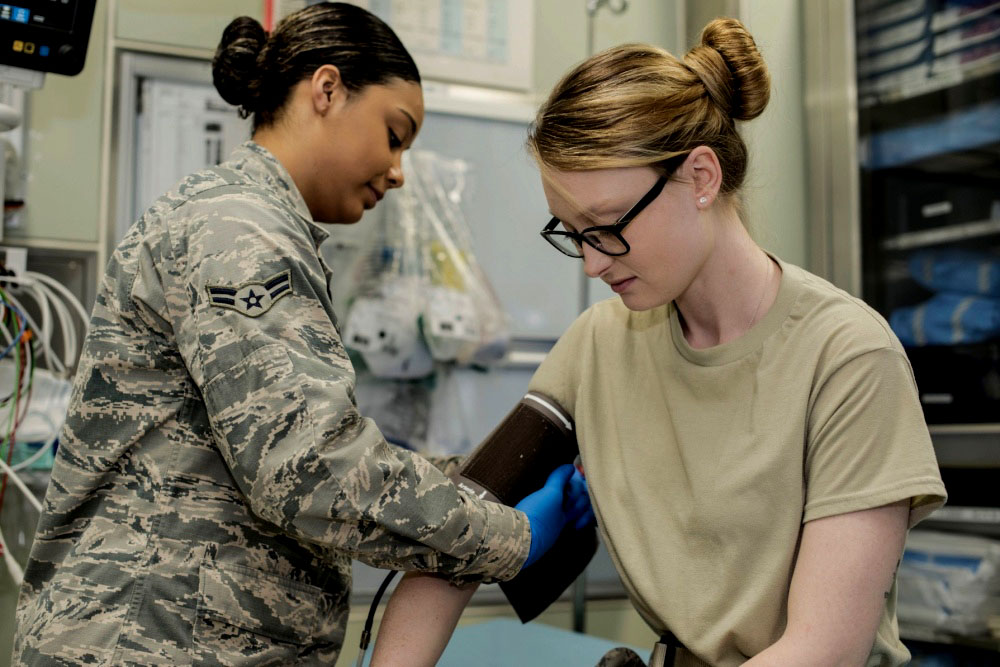
Toxic Shock Syndrome is a dangerous, potentially fatal, condition with symptoms that often appear suddenly and quickly escalate. Although it’s not a common condition, prevalence can decrease even more through awareness, experts say.
Women's health remains priority for doctors turned medical museum volunteers
Article
10/25/2018
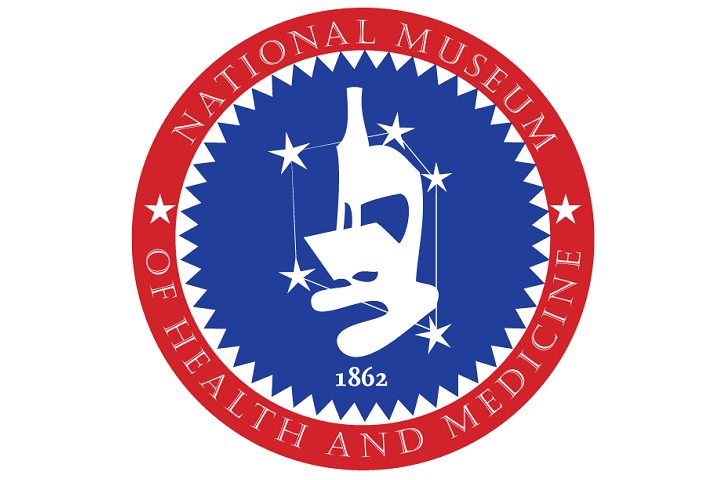
The Handwerkers clearly enjoy volunteerism
Military Midwives Advance Medicine
Video
10/23/2018

Military midwives assist in advancing military medicine. Capt. Brittany Hannigan uses educational opportunities to bring evidence-based practices to the patient's bedside.
‘Strong progress’ in decreasing death from breast cancer
Article
10/23/2018
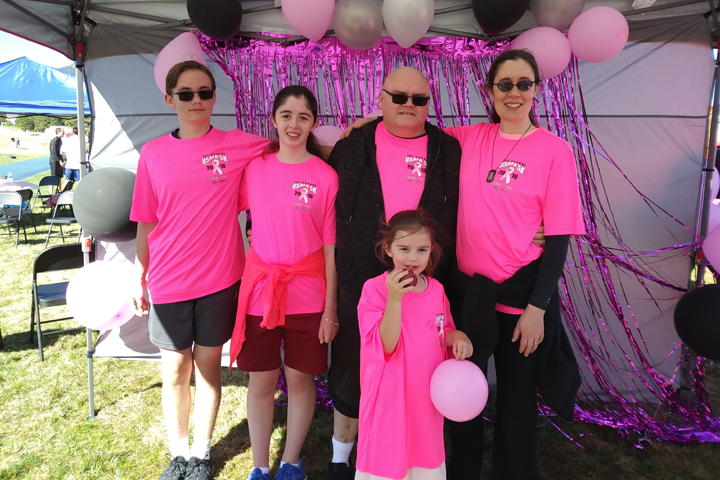
Improvements in detection, treatment pave the way
Women’s Health: Taking time for yourself
Article
10/16/2018

The top two causes of death for women are heart disease and cancer
Military midwives as educators
Video
10/15/2018

Within the military, midwives serve as educators. Kwuan Paruchabutr shares how midwives ensure that all medical staff are well trained in women's health care.
Sticks and stones can break bones – and so can osteoporosis
Article
10/11/2018

Steps to take today to build a future of healthy bones
Pilot Program on Investigational Treatment of Members of the Armed Forces for TBI and PTSD
Congressional Testimony
10/9/2018
HR 3304, NDAA for FY 2014, Sec. 704
Military Midwives in Leadership Roles
Video
10/5/2018

The duties of certified nurse midwives go far beyond the labor delivery room. Cmdr. Kim Shaughnessy explains how midwives hold leadership positions across the Military Health System and how they help shape women's health policy.
Mammograms recommended for early detection of breast cancer
Article
10/4/2018

A mammogram is a low-dose x-ray used to detect the early stages of breast cancer
Midwives in the Military
Video
10/3/2018

Military midwives are key in the Department of Defense's priority of medical readiness. Army Lt. Col. Danielle Molinar shares ways midwives keep female soldiers ready to deploy.
Depression
Fact Sheet
9/27/2018
A fact sheet that reviews the signs, symptoms, and effects, both mental and physical of depression.
What to Expect at Your First Appointment
Video
9/20/2018

You’ve reached out for help, you’ve found the right provider, now Kristin Gwin from Walter Reed National Military Medical Center shares what to expect at your first appointment.
Kristin Gwin, Walter Reed Social Worker Talks About Getting Help
Video
9/12/2018

Kristin Gwin, a Social Worker at Walter Reed National Military Medical Center understands that getting help can be an intimidating process. She offers advice on how to get started by letting a professional know you want help.
Stopping bullying takes understanding, involvement
Article
9/7/2018
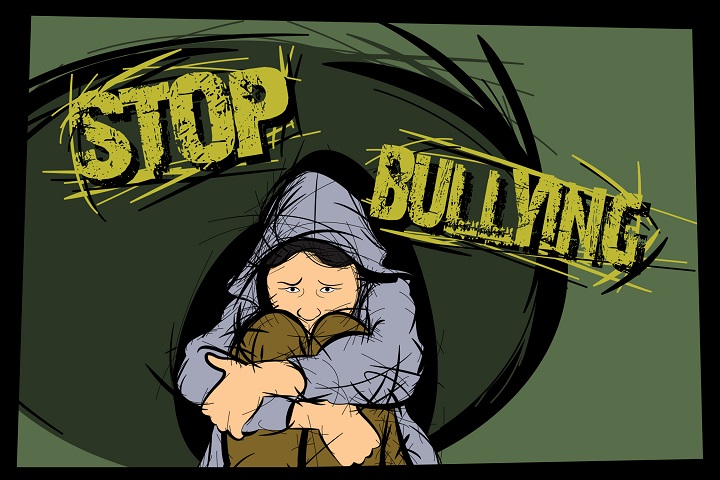
Bullying can leave visible and invisible wounds and have lasting effects on children and teenagers. Signs of the behavior can vary, and bullying others and being bullied are not mutually exclusive, experts say.
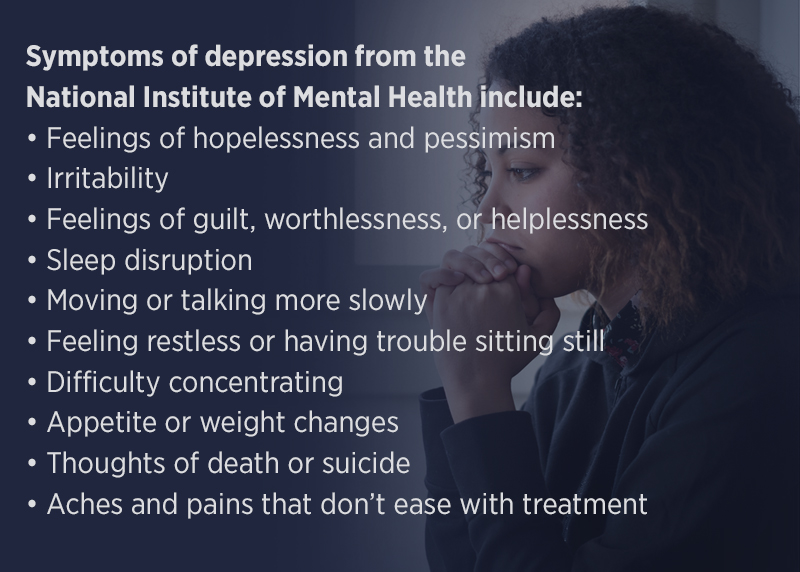






















.png)











No hay comentarios:
Publicar un comentario